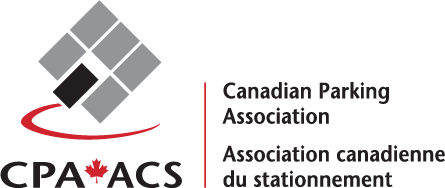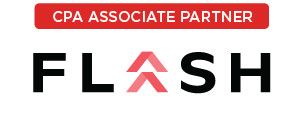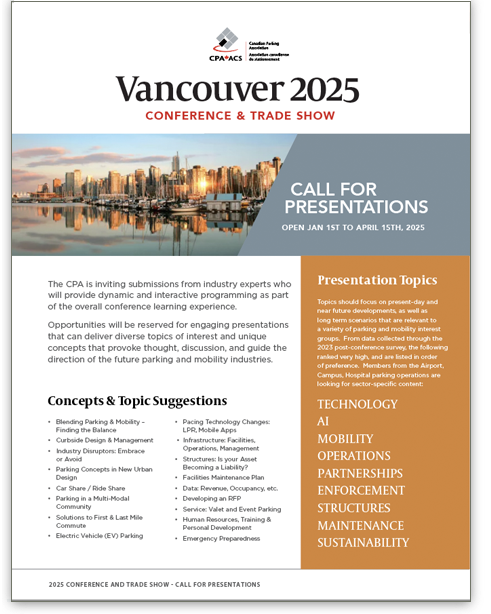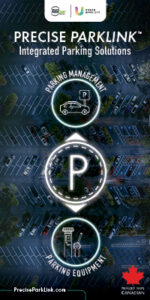By Ralph Bond
The recent Ontario provincial election saw the high price of hospital parking for patients and visitors pop up as an issue.
As the population ages and more of us utilize hospital services and the cost of providing parking in rapidly urbanizing areas continues to increase, this hot topic is likely to keep sizzling over the next decade. The issue is more complicated than it first appears.
Historically, the province has funded approximately 75% of hospital capital and operating costs and relied on the local hospital to fund the remainder by generating surplus revenues from services like parking, retail stores, coffee shops and cafeterias. This has lead over time to the standard practice of parking facilities at hospitals being self- financing.
Perhaps the best way to start a conversation about hospital parking is to understand what it costs to provide it. This includes development costs, operating, maintenance and capital repair costs as well as replacement cost over the long term life cycle of the facilities. The cost of construction will vary significantly depending on whether the parking is in surface lot, above ground parking garage or an underground garage or some combination thereof.1 In the Greater Toronto Area (GTA), a surface parking space would likely cost approximately $15,000 per space to build including land costs. An above ground parking garage would likely cost approximately $35,000 per space while underground parking would be about $50,000 per space. The general trend is towards less surface parking and more garage parking as land becomes scarce and hospitals continue to expand into the surface lots. This means the cost of providing parking is likely to increase significantly into the future.
One also has to consider the cost to operate the parking which would include items like hydro for the lighting, parking access and revenue…
By Chris Mckenty
Canadian airports, unlike most of their American counterparts, are operated by non-share, not-for-profit airport authorities and are mandated to operate as self-sustaining businesses. This gives them greater freedom to adopt new technology pricing and marketing strategies that help them reach their goals. This is especially the case in commercial areas like parking.
Canadian airports, unlike most of their American counterparts, are operated by non-share, not-for-profit airport authorities and are mandated to operate as self-sustaining businesses. This gives them greater freedom to adopt new technology pricing and marketing strategies that help them reach their goals. This is especially the case in commercial areas like parking.
In the past few years, this technology has included the ability to give their customers the option to book and pre-pay for their car parking online via the Canadian’s Airports website or mobile app. You might be surprised to learn that last month alone (June 2014) nearly 10,000 fully prepaid parking bookings were made at just 3 of Canada’s airports generating an additional $750,000 of revenue for the airports. Edmonton Airport is predicted to grow its pre paid parking by 40% annually over 2015.
With this greater freedom the incentives and drivers for change can vary depending on the dynamics at each Airport,however common factors are apparent. These include:
- Increasing competition from off airport car parks
- Under budget achievement for car parking revenue
Spare parking capacity or very limited capacityin the car parks - A desire to improve customer service
Another significant factor in the decision to adopt this new technology is the lack of specific information on who the passengers and Airport customers are. Airlines have long since had access to this data but for many reasons have been either unable or unwilling to share this detailed traveller data. By offering an online reservation solution for their car parks, the Airports…
By Sarah Levy Sarfin
Typically when governments wish to raise revenue, they tax the population. One common tax is the federal and provincial fuel tax. The proceeds of this tax have funded municipal infrastructure needs across Canada. However, continuing to rely on a fuel tax to pay for infrastructure is not an eternal solution. According to a study commissioned by the Residential and Civil Construction Alliance of Ontario (RCCAO) written by Professor Harry Kitchen of Trent University, a number of factors will lead to a decline in fuel revenues. Kitchen offered alternatives to a fuel tax: road pricing and parking taxes or levies.
While the RCCAO study focuses on the greater Toronto and Hamilton areas (GTHA), it has implications for the rest of the country. Kitchen pointed out that the push for energy-efficient vehicles, the proliferation of electric and hybrid vehicles, the decrease in the number of young adults (especially in urban areas) and Baby Boomer drivers will all negatively impact revenues from a fuel tax.
“Road pricing” refers to creating toll highways. Kitchen believes some form of road pricing in the GTHA might be an effective option to raise revenues that will fund infrastructure development and maintenance. He pointed to research that shows that road pricing can generate significant amounts of money. However, his recommendations about parking taxes and levies offer food for thought to the Canadian parking industry.
The Economics of Parking
Kitchen examines parking through the lens of economics. In his study, he asserted that parking is inefficiently priced. In economics, efficiency refers to the optimal allocation of resources. The economics professor explained that on-street parking in high-demand areas is priced far below its scarcity value. “Scarcity value” means that when something is in limited supply and high demand, there will be a mismatch of the desired supply and demand equilibrium….
By Rachel Levy Sarfin
Canada’s Anti-Spam Legislation (CASL) will come into force on July 1st, 2014. The law has been gaining attention long before it will go into effect, though.
Critics claim it is too broad and overly complicated. Once it comes into force, the law will have an enormous impact on every commercial electronic communication within this country. Robert Burko, president and founder of the marketing firm Elite Email, shared his tips on how to navigate the marketing landscape in the wake of this legislation.
Burko explained that the most important thing to know about CASL is that you must obtain consent from the people with whom you plan to communicate. “Gone are the days of being able to email whoever you want, whenever you want, without caring about whether you have permission to contact that person,” he stated.
Elite Email’s president emphasized that communicators need to obtain consent according to the law’s specifications. Burko added that there are two types of consent: express and implied. “The best type of consent is ‘express consent,’ which is when the person you are emailing has explicitly said ‘Yes, I want to receive your emails,’” he remarked. “The other type of consent is ‘implied consent,’ which is when someone has paid you or entered into a contract with you and a two-year window is created where you can email them.”
Violating CASL will result in hefty penalties. Fines for breaking this law can reach up to $1 million for individuals and up to $10 million for companies. Even non-Canadians can be found guilty of breaking CASL’s rules. The law applies any time someone uses a computer or mobile device in Canada to access a commercial electronic message, which includes emails and text messages. That means that an American business can be liable for penalties if a…
By Jay Gajiwala, Faculty of Science, B.Sc., Spec. Hons. Biology (Biomedical Science)
Tom Arnold Scholarship in Parking Industry Advancement at York University 2014 recipient
To observe how our cities and communities change as time passes is a duty of every resident. As a resident of Canada, I would like to document what I have observed over the years in the transportation and parking industries and the direction that I hope the industries will take in the future for cities and communities across Canada.
Over the last 50 years, the impact transportation has had on our societies is phenomenal. Cities and communities have been built with transportation in mind. At the root of the transportation is the parking industry. In the time when automobiles were a rare commodity, space was vastly available for use. However, as the population owning an automobile grew, the realization came that parking space is not unlimited. This resulted in parking facilities and technologies becoming more important than one could have ever thought.
For a long time, the goal has been to park as many automobiles in as little space as possible. To achieve this goal, we see vertical parking garages raised from the ground so that the limited land in urban areas can be utilized with more efficiency. The importance of the management of parking space is also evident in any downtown core of a city. For example, avoiding on-street parking during rush hours is a great way of using space to its full capacity. These and many other innovations have been geared towards efficient use of space.
In a growing city where parking is limited, many drivers find themselves needlessly wasting time going back and forth for parking spots. To address this, over the past decade parking spot counting systems have evolved in heavily populated areas where parking spaces…
By Bern Grush
Most of us in the parking industry are aware that the days of the parking meter are waning. But these machines will not disappear suddenly. Rather they will experience a long slow decline over the next decade, in many ways repeating what the phone booth has just been through. How meter attrition will be managed is a key consideration for your city’s next meter refresh—especially because it should be your last one. The wrong choice could mean a significant loss.
In March 2014, Dennis Burns wrote about the success of the Washington, D.C. pay-by-phone program: “…the D.C. program has earned 550,000 customers and accounts for 40 percent of the city’s parking revenues. About 80 percent of the seven million transactions to date employ smart phones, with payment options that include credit cards, an online and mobile money management solution, and PayPal.”
When will you go meterless?
While we have come some distance since the first parking meter in the 1930s, we will progress much further in the next few years. As automobiles get smarter, the act of pausing to pay for parking – even on a smartphone – will become unnecessary and increasingly undesirable. High enforcement costs are driving cities toward digital credentials tied to license plates that can be rapidly scanned for payment confirmation. New technologies are enabling more robust analytics that allow flexible pricing management. Older style, curbside meters—both single space meters (SMSs) and multi-space meters (MSMs) delay this progress.
The current supply of on-street meters in North America ranges from a full complement of pay-by-license plate meters, such as in Calgary and Pittsburgh, to none at all. At some point in the foreseeable future, parking will be managed in the great majority of all these cities by all-digital means including phone, Web or in-vehicle, self-paying meters. Accompanying…
By Tony DiGiovanni
Slip and fall claims are a serious threat to your parking operations just like they are in the snow and ice management industry. The snow industry represented by Landscape Ontario and the Canadian Nursery Landscape Association (CNLA) received a shock a number of years ago when an insurance carrier decided they were no longer interested in insuring snow operations because of the financial risks. Even though members collectively paid millions of dollars, the insurance company decided not to renew. This was a wake-up call. Risk management has become the number one priority for the ice and snow management sector.
In April, a Snow and Ice Summit was organized by the CNLA risk management committee in order to bring together all stakeholders in a common effort to deal with the issue. The Canadian Parking Association was at the table to hear from other stakeholders and to provide insight from its members’ perspective.
The summit began with an introduction by Gerald Boot (Chair). He spoke about the challenges of slip and fall claims and how the situation will get worse unless we work together to find solutions. It is no longer possible to download all the risks to the contractor through “hold harmless” clauses in the contract. Eventually insurance rates will become exorbitant, or in some cases insurance will be impossible to get. The issue affects all stakeholders.
Lawyer Robert Kennaley gave a lawyer’s perspective on the issue. He stressed that if all stakeholders joined together we would have the opportunity to improve best practices, save money, do better with environmental stewardship, save crumbling infrastructure and improve safety and quality of life. He talked about the problems of transferring risk to the contractor. One-sided agreements do not work. It is expensive to transfer risk. It encourages more salt use and therefore costs….
By Lyndon McLean
Winter salt is an inexpensive and easy way to deal with icy patches. Trucks salting roadways and neighbours spreading a little de-icer on the front sidewalk are familiar sight. But as a tragedy such as the collapse of the Algo Centre Mall in Elliot Lake shows, there can be high costs associated with overuse of salt and a lack of facility maintenance.
The Smart About Salt Council is an independent, not-for-profit organization dedicated to protecting the environment through programs that improve management of winter salt used to control ice on sidewalks, parking lots and roadways. The council was started by its partners, the Region of Waterloo, Landscape Ontario Horticultural Trades Association, Building Owners and Managers Association of Ottawa, and Ontario Good Roads Association.
In response to concerns over rising levels of sodium and chlorides in municipal drinking water, the Region of Waterloo took action. One of the first large municipalities to recognize that winter salt use is a major problem, they developed an active strategy for more efficient salt use on its roads. But they also developed the Smart About Salt program, designed to teach private contractors and property managers the best practices of salt management that help to reduce its use while still ensuring that public safety is not compromised.
From building owners to snow removal contractors to the general public, each partner has an important stake in ensuring that its members and constituents understand the program’s value in protecting the environment. All partners encourage everyone to participate in and promote this program. For example, the Region of Waterloo now requires all of its contractors that apply salt on its building properties to be registered in the Smart About Salt program, as contracts are renewed.

Smart About Salt’s Guiding Principles
Mission:
- To protect freshwater…
By Bern Grush
A self-locating, self-paying parking meter can dramatically improve workflow, enforcement and the political relationship between municipal parking management and its stakeholders. This technology meshes with existing pay-by-phone and pay-and-display systems.
Few parkers are likely to appreciate that municipal parking management is a considerably more complex matter than may appear when they are frustrated by no parking signs, parking citations, poles with multiple confusing instructions, loading zones, handicapped parking, no stopping, variable time limits, too little parking just where they want it, and so on. Municipal parking has many different requirements and there are many stakeholders with conflicting priorities involved in the task of fitting what is sometimes too many automobiles into the scarce spots along our urban streets. In any large urban area and many medium-sized ones, municipal parking management is certainly far more difficult than managing the lots or garages for suburban shopping malls.
Municipalities always want their parking spaces utilized correctly for traffic flow and safety reasons. They generally like to see a sensible occupancy level to ensure a balanced, vibrant commercial downtown—i.e., not so much that access is denied to some or that congestion is inadvertently encouraged. Nor so little that the commercial district might suffer and businesses relocate. Many cities need to generate sufficient revenue to fund the collection and enforcement process, and a significant number even seek to generate a surplus for their treasury.
Business associations want business traffic, including people that arrive in automobiles. This generally results in demand for plentiful free or cheap parking which cities can increasingly ill-afford from a financial or traffic management perspective.
Environmentalists consider the automobile and by association, parking, to be a problem—and they have a point. They may want parking to cost more, or to have less of it available. The logic of parking scarcity to discourage use…
In support of the Regional Growth Strategy policy to encourage reduced residential parking requirements in coordination with frequent transit service, Metro Vancouver conducted one of the most comprehensive studies of apartment parking supply and demand for a metropolitan area. Evidence was gathered from current and emerging trends, discussions with municipal planners and engineers, and developers, and the completion of two regional surveys. From this investigation, key findings and opportunities have been identified for consideration by municipalities and the development industry to achieve a better match between apartment parking supply and demand close to frequent transit.
Executive Summary
Encouraging compact communities, sustainable transportation choices, and housing affordability are well-established objectives in Metro Vancouver’s Regional Growth Strategy and Regional Affordable Housing Strategy. Parking is at the nexus of these objectives. Given that apartments represent over one-half of new housing starts in the region today and will remain so over the next three decades as the population grows by one million people, having current and efficient parking requirements are critical to the achievement of a sustainable region and livable neighbourhoods.
In metropolitan Vancouver, the cost of constructing on-site structured parking can range from $20,000 to $45,000 per stall, plus maintenance costs. Ensuring the parking requirements match actual demand can help reduce unnecessary housing development costs.
The Metro Vancouver Apartment Parking Study is one of the most comprehensive examinations of apartment parking supply and demand conducted on a metropolitan area. Through the exploration of emerging trends, review of past studies, discussions with municipal planners, engineers, and developers, and completion of two regional surveys, a robust evidence base was established.
Current and Emerging Trends
The amount of parking required in new apartment developments should reflect current and emerging trends. Transit ridership continues to increase year after year, in part from improved transit service levels and the expansion of TransLink’s Frequent…





